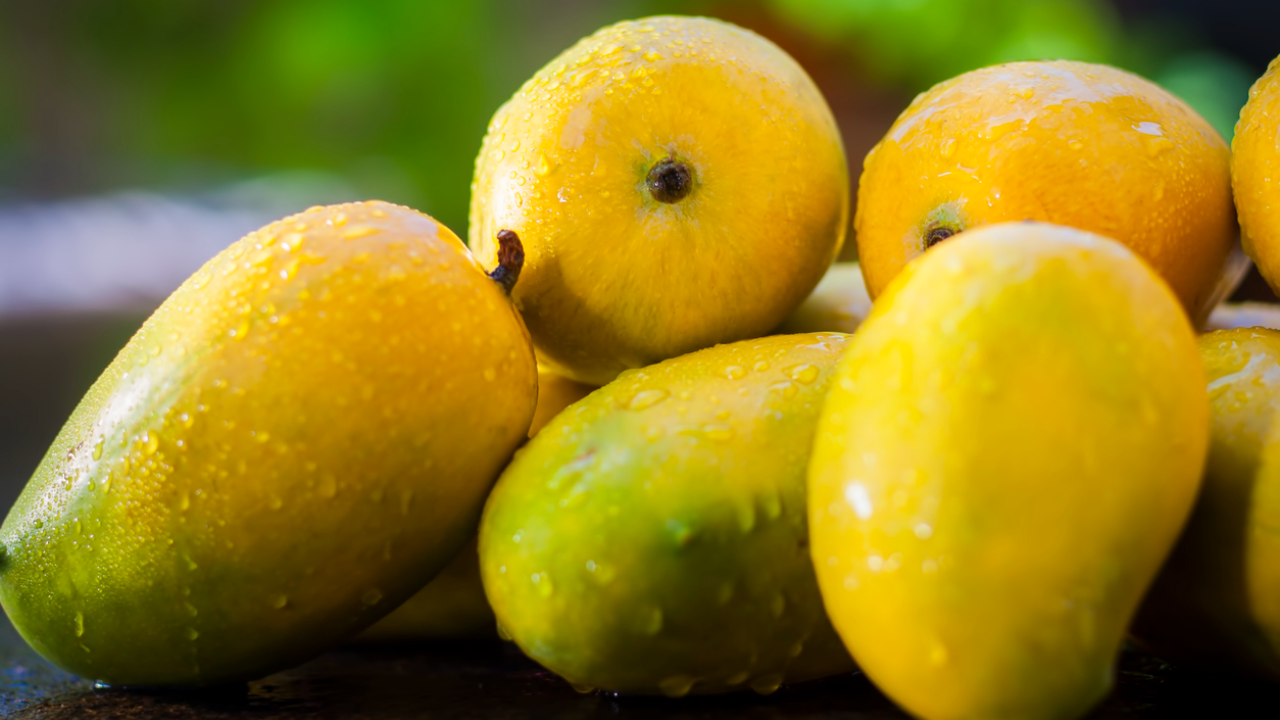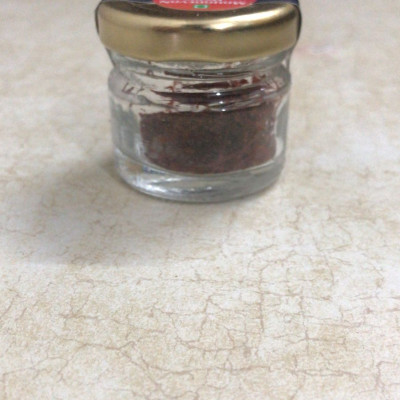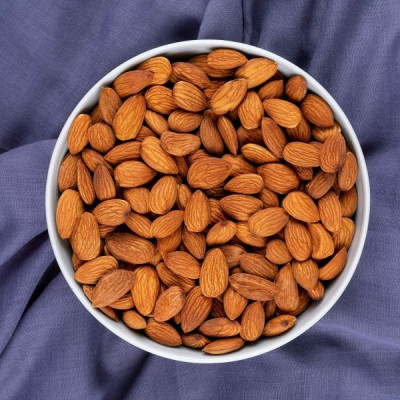Fruits
Unveiling the Exquisite Delight: The Legend of Banganapalli Mangoes

Banganapalli Mango: The Golden Delight
Introduction
Welcome to the golden world of Banganapalli mangoes, where luscious flavors and tropical bliss await. In this comprehensive article, we will explore the unique qualities, rich history, and irresistible appeal of the Banganapalli mango variety. Our aim is to provide you with a detailed understanding of this exquisite fruit and equip you with the knowledge to truly appreciate its golden allure.
Regions where Banganapalli Mango is grown:
- Kurnool District: Kurnool district in Andhra Pradesh, India, is one of the primary regions where Banganapalli Mango is cultivated. The region's semi-arid climate, with hot summers and mild winters, provides favorable conditions for the mango trees to thrive. The mangoes grown in the Kurnool district are known for their distinct flavor and aroma.
- Anantapur District: Another significant region for Banganapalli Mango cultivation is Anantapur district in Andhra Pradesh. The region's well-drained soil and semi-arid climate create ideal conditions for the mango trees to flourish. The mangoes from this region are characterized by their sweetness and minimal fiber content.
- Chittoor District: Chittoor district, also in Andhra Pradesh, is known for its contribution to Banganapalli Mango production. The region's fertile soil and suitable climate support the growth of high-quality mangoes. Chittoor district is renowned for producing Banganapalli Mangoes with a perfect balance of sweetness and tanginess.
- Other Regions: In addition to the aforementioned districts, Banganapalli Mango is also cultivated in other parts of Andhra Pradesh, such as Kadapa, Nellore, and Krishna districts. These regions share similar climatic conditions and agricultural practices, enabling the successful cultivation of Banganapalli Mango.
Appearance of Banganapalli Mango:
- Size: Banganapalli Mangoes are known for their large size, making them visually appealing and attractive. They are among the biggest mango varieties available in the market.
- Shape: The mangoes have an elongated and oval shape, with a prominent curved tip at the stem end. This distinctive shape sets them apart from other mango varieties.
- Color: When ripe, Banganapalli Mangoes exhibit a vibrant golden-yellow color on the outer skin. The entire mango is uniformly colored, giving it an enticing appearance.
- Skin Texture: The skin of Banganapalli Mangoes is smooth and relatively thin. It is not as thick or fibrous as some other mango varieties, making it easier to peel and enjoy the fruit.
- Aroma: One of the distinguishing features of Banganapalli Mangoes is their enticing aroma. The mangoes emit a sweet and fragrant scent that intensifies as the fruit ripens.
- Flesh: The flesh of Banganapalli Mangoes is tender, juicy, and fiber-free. It has a luscious golden-yellow color that is consistent throughout the fruit.
- Seed: Banganapalli Mangoes have a large and flat seed at the center. The seed is relatively thin, allowing for more flesh content and making it easier to extract the fruit.
- Juice Content: Banganapalli Mangoes are known for their high juice content. They are exceptionally juicy, adding to their overall appeal and making them perfect for enjoying as a refreshing snack or in various culinary preparations.
Flavor of Banganapalli Mangoes:
- Sweetness: Banganapalli Mangoes are renowned for their exceptional sweetness. They have a rich, honey-like sweetness that is highly satisfying to the taste buds.
- Tropical Aroma: The mangoes emit a delightfully tropical aroma that is characteristic of the variety. The enticing fragrance further enhances the overall flavor experience.
- Mild Tartness: Along with their sweetness, Banganapalli Mangoes have a subtle hint of tartness. This gentle tartness provides a perfect balance to the sweetness, adding complexity to the flavor profile.
- Juiciness: Banganapalli Mangoes are incredibly juicy. Each bite releases a burst of succulent juice, making them a refreshing and thirst-quenching fruit.
- Smooth Texture: The flesh of Banganapalli Mangoes is exceptionally smooth and buttery. It melts in the mouth, offering a luxurious texture that adds to the overall enjoyment.
- Minimal Fiber: One of the unique characteristics of Banganapalli Mangoes is their minimal fiber content. The flesh is mostly fiber-free, allowing for a smooth and enjoyable eating experience.
- Subtle Citrus Notes: In addition to the predominant sweetness, Banganapalli Mangoes often exhibit subtle citrus notes. These citrus undertones provide a pleasant tanginess that complements the overall flavor profile.
- Complexity: The flavor of Banganapalli Mangoes is complex and multi-dimensional. It combines sweetness, mild tartness, tropical aromas, and a touch of citrus to create a harmonious and satisfying taste experience.
Versatility of Banganapalli Mangoes:
- Fresh Consumption: Banganapalli Mangoes are delicious when eaten fresh. Their sweet and juicy flesh makes them a popular choice for enjoying as a refreshing snack or dessert.
- Juices and Smoothies: The high juice content and naturally sweet flavor of Banganapalli Mangoes make them an excellent choice for making juices, smoothies, and mango-based beverages. Their vibrant color and tropical taste add a refreshing twist to any drink.
- Desserts and Sweets: Banganapalli Mangoes are often used in various dessert preparations. They can be used to make mango ice cream, sorbets, puddings, custards, and even mango-flavored cakes and pastries. Their natural sweetness enhances the flavor of these sweet treats.
- Salads and Salsas: The vibrant color and juicy texture of Banganapalli Mangoes make them a delightful addition to salads and salsas. They add a burst of freshness and tropical touch to savory dishes, complementing ingredients like greens, herbs, and other fruits.
- Chutneys and Sauces: Banganapalli Mangoes are commonly used in making tangy and flavorful chutneys and sauces. They can be combined with spices, herbs, and other ingredients to create versatile condiments that pair well with various dishes, from Indian curries to grilled meats.
- Pickles and Preserves: The firm flesh of Banganapalli Mangoes makes them suitable for making pickles and preserves. They can be pickled in vinegar or traditional spices to create tangy and flavorful condiments that can be enjoyed for an extended period.
- Culinary Combinations: Banganapalli Mangoes can be combined with other fruits and ingredients to create unique culinary combinations. They pair well with tropical fruits like pineapple and coconut, as well as with spices like ginger and chili, offering a range of flavor profiles to experiment with.
- Canning and Drying: Banganapalli Mangoes can also be preserved by canning or drying. Canned mango slices or dried mangoes make for convenient snacks and can be used in baking, cooking, or enjoyed on their own.
Nutritional benefits of Banganapalli Mangoes:
- Vitamin C: Banganapalli Mangoes are a rich source of vitamin C, which is essential for a healthy immune system, collagen production, and antioxidant protection.
- Dietary Fiber: These mangoes contain dietary fiber, which aids in digestion, promotes satiety, and helps maintain a healthy digestive system.
- Vitamin A: Banganapalli Mangoes provide a good amount of vitamin A, which is beneficial for maintaining healthy vision, supporting skin health, and promoting proper growth and development.
- Potassium: These mangoes are a good source of potassium, an important mineral that helps regulate blood pressure, supports heart health, and promotes proper muscle and nerve function.
- Antioxidants: Banganapalli Mangoes are rich in antioxidants, including phenolic compounds and carotenoids, which help protect the body against oxidative stress and reduce the risk of chronic diseases.
- Low in Fat: Banganapalli Mangoes are low in fat, making them a healthy choice for those watching their fat intake.
- Hydration: With their high water content, Banganapalli Mangoes can contribute to hydration and help maintain optimal water balance in the body.
- Nutrient Dense: Banganapalli Mangoes are a nutrient-dense fruit, meaning they provide a range of essential vitamins and minerals while being relatively low in calories.
Health benefits of Banganapalli Mangoes:
- Boosts Immunity: Banganapalli Mangoes are rich in vitamin C, which helps strengthen the immune system, fight off infections, and protect against illnesses.
- Enhances Digestive Health: The dietary fiber content in Banganapalli Mangoes promotes healthy digestion, prevents constipation, and supports a well-functioning digestive system.
- Supports Heart Health: The potassium content in Banganapalli Mangoes helps regulate blood pressure, maintain heart health, and reduce the risk of cardiovascular diseases.
- Promotes Eye Health: Banganapalli Mangoes are a good source of vitamin A, which is beneficial for maintaining healthy vision, preventing night blindness, and protecting the eyes from age-related macular degeneration.
- Aids Weight Management: Banganapalli Mangoes are low in calories and high in dietary fiber, making them a satisfying and nutritious snack option for those watching their weight.
- Provides Antioxidant Protection: The antioxidants present in Banganapalli Mangoes help neutralize free radicals, reduce oxidative stress, and lower the risk of chronic diseases like cancer and heart disease.
- Supports Skin Health: The vitamin C and antioxidants in Banganapalli Mangoes contribute to healthy skin by promoting collagen production, reducing signs of aging, and protecting against damage from environmental factors.
- Hydration and Electrolyte Balance: Banganapalli Mangoes have high water content and contain essential electrolytes like potassium, which help maintain hydration and electrolyte balance in the bod
Availability of Banganapalli Mangoes:
- Seasonal Fruit: Banganapalli Mangoes are a seasonal fruit, typically available during the summer months, with the peak season varying depending on the region of cultivation.
- India's Pride: Banganapalli Mangoes are primarily grown in the southern state of Andhra Pradesh in India, where they are considered one of the most popular and sought-after mango varieties.
- Local and Export Markets: Banganapalli Mangoes are not only popular in domestic markets within India but also exported to various countries around the world, including the United States, Canada, the United Kingdom, and the Middle East.
- Limited Availability: Due to their seasonal nature, Banganapalli Mangoes may have limited availability, and the harvest quantity can vary each year based on weather conditions and other factors.
- Farm Fresh: To enjoy the best quality Banganapalli Mangoes, it is recommended to source them directly from trusted local growers or farmers' markets, ensuring they are freshly picked and ripe.
- Regional Variations: While Andhra Pradesh is the primary region associated with Banganapalli Mangoes, other mango-growing regions in India, such as Telangana, Tamil Nadu, and Karnataka, may also cultivate and offer this variety during the mango season.
- Specialty Stores: Some specialty stores and online platforms may offer Banganapalli Mangoes, especially in regions with significant demand for Indian mango varieties.
- Limited Shelf Life: Banganapalli Mangoes have a limited shelf life once ripe, so it's best to consume them within a few days of purchasing to enjoy their optimal flavor and freshness.
Storage and shelf life of Banganapalli Mangoes:
- Ripening: Banganapalli Mangoes are typically harvested when they are slightly underripe to ensure safe transportation. They will continue to ripen after picking, becoming softer and sweeter over time.
- Room Temperature: If you want to speed up the ripening process, you can place the Banganapalli Mangoes at room temperature, preferably in a paper bag, to help trap ethylene gas and encourage faster ripening.
- Avoid Refrigeration: It is generally recommended not to refrigerate Banganapalli Mangoes until they are fully ripe. Cold temperatures can negatively affect their flavor and texture.
- Ripe Mangoes: Once the Banganapalli Mangoes are fully ripe, you can store them in the refrigerator to prolong their shelf life. Place them in a breathable bag or container to prevent moisture buildup.
- Shelf Life: When stored properly in the refrigerator, fully ripe Banganapalli Mangoes can typically last for up to 5-7 days. However, it's best to consume them as soon as possible to enjoy their optimal flavor and freshness.
- Handling with Care: To maximize the shelf life, handle Banganapalli Mangoes gently to avoid bruising or damaging the fruit. Excessive pressure can cause them to spoil more quickly.
- Freezing: If you have excess Banganapalli Mangoes, you can freeze them for later use. Peel, slice, or puree the mangoes and store them in airtight containers or freezer bags. Frozen mangoes can be used in smoothies, desserts, or as a topping for yogurt.
- Quality Check: Before consuming or using a Banganapalli Mango, inspect it for any signs of mold, rot, or spoilage. Discard any mangoes that appear damaged or have an unpleasant smell.
Q1: Where Banganapalli mangoes are grown:
- Andhra Pradesh: Banganapalli mangoes are extensively grown in the state of Andhra Pradesh, located in the southeastern part of India. The region's favorable climate and fertile soil make it an ideal location for cultivating these mangoes.
- Telangana: Another prominent region for Banganapalli mango cultivation is Telangana, a neighboring state of Andhra Pradesh. The mango trees thrive in the warm climate and well-drained soil found in this region.
- Krishna District: Krishna district in Andhra Pradesh is renowned for its Banganapalli mango orchards. The farmers in this district have honed their expertise in growing and harvesting this particular mango variety.
- Chittoor District: Chittoor district, located in the Rayalaseema region of Andhra Pradesh, is famous for its large-scale cultivation of Banganapalli mangoes. The mangoes produced in this district are known for their exceptional quality.
- Nellore District: Nellore district, situated on the southeastern coast of Andhra Pradesh, is also a significant contributor to the production of Banganapalli mangoes. The favorable coastal climate aids in the growth of these mangoes.
- Kadapa District: Kadapa district, located in the Rayalaseema region, is another key area where Banganapalli mangoes are grown. The mango orchards in this district yield a substantial quantity of these delectable mangoes.
- Mahbubnagar District: In Telangana, Mahbubnagar district plays a significant role in Banganapalli mango cultivation. The region's hot and arid climate, coupled with fertile soil, provides optimal conditions for the mango trees to flourish.
Q2: When is the Banganapalli mango season?
- Summer Delight: The Banganapalli mango season is primarily during the summer months, typically spanning from April to June.
- Early Bloomers: Banganapalli mangoes are one of the early-maturing mango varieties, often being among the first mangoes to be harvested at the start of the mango season.
- April Harvest: The harvest of Banganapalli mangoes usually begins in April, marking the commencement of their peak availability in the market.
- Extended Season: The Banganapalli mango season generally lasts for about two to three months, allowing mango enthusiasts to enjoy these delicious fruits throughout the summer season.
- Ripening Progression: The ripening of Banganapalli mangoes occurs gradually during the season, with early harvests showcasing slightly tangier flavors and later harvests offering sweeter and fully matured fruit.
- Ideal Climatic Conditions: The warm and tropical climate during the summer months provides the perfect environment for the growth and maturation of Banganapalli mangoes.
- Ample Sunshine: Banganapalli mango trees thrive under abundant sunlight, and the longer daylight hours during the summer season contribute to the development of their vibrant colors and delicious flavors.
- Harvesting Timeframe: The exact timing of the Banganapalli mango harvest may vary slightly depending on specific geographical locations and weather conditions within the growing regions.
- Fruit Maturity: Banganapalli mangoes are typically harvested when they have reached the desired level of maturity, ensuring optimal taste, texture, and sweetness.
- Early Bird Advantage: As one of the first mango varieties available in the season, the arrival of Banganapalli mangoes generates excitement and anticipation among mango enthusiasts who eagerly await their delicious taste.
- Limited Availability: While the Banganapalli mango season lasts for a few months, it is important to note that these mangoes are available for a relatively shorter period compared to some other mango varieties.
Q3: how to identify ripe Banganapalli mangoes:
- Color: Ripe Banganapalli mangoes display a vibrant golden-yellow color when fully matured. The skin may also have a slight blush of orange or red. Avoid mangoes with green patches, as they are likely underripe.
- Texture: Gently squeeze the mango with your palm to assess its texture. Ripe Banganapalli mangoes should yield slightly to pressure without feeling too soft or mushy. The flesh should have a firm yet yielding consistency.
- Fragrance: Lift the mango to your nose and inhale its aroma. Ripe Banganapalli mangoes emit a strong, sweet, and fragrant scent that is characteristic of their maturity. The aroma intensifies as the mango ripens.
- Softening of the Stem End: Examine the stem end of the mango. A ripe Banganapalli mango will show signs of softening around the stem, indicating that it is ready to be consumed.
- Weight: Ripe Banganapalli mangoes tend to feel heavier than unripe ones. When compared to other mangoes of similar size, the ripe Banganapalli mango should feel weighty in your hand.
- Skin Appearance: Check for any wrinkling or shriveling of the skin, as this can be an indication of overripeness. While slight wrinkles are acceptable, excessive wrinkling may suggest that the mango is past its prime.
- Taste: If possible, taste a small portion of the mango. Ripe Banganapalli mangoes have a rich, sweet, and luscious flavor with a hint of tanginess. The taste should be well-balanced, without any bitter or sour notes.
- Harvest Season: Familiarize yourself with the general harvest season of Banganapalli mangoes in your region. This knowledge can help you determine the likelihood of finding ripe mangoes in the market or at local orchards.
- Local Expertise: Seek advice from local farmers, vendors, or experts who are familiar with Banganapalli mangoes. They can provide insights into the specific characteristics and indicators of ripeness for this particular mango variety.
Q4: How to store Banganapalli mangoes to keep them fresh:
- Room Temperature: If you plan to consume the Banganapalli mangoes within a day or two, you can store them at room temperature. Keep them in a cool and well-ventilated area away from direct sunlight and heat sources.
- Separation: To prevent the mangoes from overripening quickly, it is advisable to store them separately. This helps avoid the spread of ethylene gas, which is released by ripe fruits and can accelerate the ripening process of nearby mangoes.
- Paper Bag or Newspaper: If you want to slow down the ripening process, place the Banganapalli mangoes in a paper bag or wrap them individually in newspaper. This helps absorb excess moisture and regulates the ripening rate.
- Refrigeration: If you wish to extend the shelf life of the mangoes, you can store them in the refrigerator. Place the mangoes in a ventilated container or perforated bag to maintain proper airflow and prevent moisture buildup.
- Optimal Temperature: Set the refrigerator temperature between 10 to 13 degrees Celsius (50 to 55 degrees Fahrenheit) for ideal mango storage. This temperature range helps slow down the ripening process and keeps the mangoes fresh for a longer duration.
- Timing: If the mangoes are already ripe and you want to prolong their freshness, it is best to refrigerate them as soon as possible. Delaying refrigeration may lead to overripening and a loss of quality.
- Limited Storage: Remember that refrigeration can slightly affect the texture of the mangoes, so it is recommended to store them for a maximum of 4-5 days to maintain their best flavor and texture.
- Ripening on the Counter: If the mangoes are not fully ripe when purchased, you can leave them at room temperature to ripen naturally. Once they reach the desired ripeness, you can transfer them to the refrigerator to slow down further ripening.
- Avoid Freezing: While it is possible to freeze mangoes, it can significantly alter their texture. Freezing Banganapalli mangoes is not recommended unless you plan to use them for smoothies, desserts, or purees.
- Quality Check: Before consuming a refrigerated mango, allow it to come to room temperature for a few minutes to enhance its flavor. Check for any signs of spoilage, such as mold, unpleasant odors, or mushy texture, and discard any mangoes that exhibit these characteristics.
Q5: What countries import Banganapalli mangoes?
A5: Banganapalli mangoes are imported by countries such as the United States, United Kingdom, United Arab Emirates, Saudi Arabia, Canada, Australia, Singapore, Malaysia, Netherlands, and Germany.
Q6: Are there any specific regulations for exporting Banganapalli mangoes?
A6: When it comes to exporting Banganapalli mangoes, there are certain regulations that need to be adhered to ensure the quality and safety of the fruit during transportation. These regulations are put in place to maintain the integrity of the export process and meet the requirements of importing countries.
Here are some specific regulations that apply to the export of Banganapalli mangoes:
- Phytosanitary Certification: To comply with international standards, exporters of Banganapalli mangoes must obtain a phytosanitary certificate issued by the relevant agricultural authorities. This certificate verifies that the mangoes are free from pests, diseases, and other harmful organisms, ensuring the product's safety for consumption.
- Quality Control: Exporters need to follow strict quality control measures to ensure that only premium-quality Banganapalli mangoes are shipped. The mangoes must meet specific criteria regarding maturity, size, appearance, and taste. Sorting and grading processes are carried out to separate mangoes that meet the export standards from those that do not.
- Traceability and Labeling: Each batch of exported Banganapalli mangoes must be properly labeled and traceable. This includes information such as the country of origin, exporter's details, and a unique identification code or label to track the mangoes back to their source. This ensures transparency in the supply chain and helps in case of any issues or recalls.
- Packaging Requirements: The packaging of Banganapalli mangoes for export is subject to regulations to ensure safe transportation and preservation of the fruit. Proper packaging materials, such as cartons or crates, should be used to protect the mangoes from physical damage and maintain their freshness and quality throughout the journey.
- Cold Chain Management: Maintaining the cold chain during transportation is crucial to preserve the freshness and flavor of Banganapalli mangoes. Exporters must ensure that the mangoes are properly stored and transported at the recommended temperature to prevent spoilage and maintain their optimal quality.
- Documentation and Customs Clearance: Exporters must complete the necessary documentation and comply with customs procedures for the smooth export of Banganapalli mangoes. This includes providing accurate information regarding the quantity, value, and origin of the mangoes, as well as fulfilling any customs requirements of the importing country.
Q7: What are the challenges faced in exporting Banganapalli mangoes?
A7: Exporting Banganapalli mangoes, while a lucrative endeavor, comes with its own set of challenges. These challenges can vary depending on factors such as regulations, logistics, market demand, and competition. Here are some of the common challenges faced in exporting Banganapalli mangoes:
- Quality Control: Ensuring consistent quality throughout the export process can be a challenge. It requires careful monitoring of the mangoes' condition, including their maturity, size, appearance, and taste, to meet the expectations of importers and consumers in the target markets.
- Compliance with Regulations: Exporting Banganapalli mangoes requires adherence to specific regulations imposed by both the exporting and importing countries. These regulations may encompass phytosanitary certifications, packaging requirements, labeling standards, and documentation procedures. Staying updated with the ever-changing regulations can be a challenge for exporters.
- Transportation and Logistics: Maintaining the cold chain during transportation is crucial to preserve the freshness and quality of Banganapalli mangoes. However, ensuring timely transportation, proper storage facilities, and efficient logistics can pose challenges, especially when exporting to distant markets with longer transit times.
- Market Access and Competition: Gaining market access in foreign countries and establishing a presence in competitive markets can be challenging. Exporters need to navigate import barriers, and competition from local suppliers, and build strong relationships with importers and distributors to successfully penetrate new markets.
- Seasonal Limitations: Banganapalli mangoes have a limited harvest season, typically ranging from April to June. Exporters must carefully plan their production, harvesting, and export schedules to ensure a steady supply of mangoes throughout the season. Meeting the demand in international markets during this limited window can be challenging.
- Price Volatility: The price of Banganapalli mangoes can be subject to fluctuations due to factors such as supply and demand dynamics, weather conditions, and currency exchange rates. Exporters need to navigate these price variations and adapt their pricing strategies to remain competitive while maintaining profitability.
- Cultural and Taste Preferences: Different countries have varying taste preferences and cultural perceptions of mangoes. Understanding and adapting to these preferences can be challenging for exporters, who may need to customize marketing strategies and product presentations to suit the specific target markets.
- Documentation and Administrative Procedures: Exporting Banganapalli mangoes involves extensive documentation, including certificates, invoices, customs forms, and compliance with administrative procedures. Managing and organizing the required paperwork accurately and efficiently can be challenging, especially for smaller exporters with limited resources.
- Market Demand and Consumer Education: Creating awareness and generating demand for Banganapalli mangoes in new markets can be a challenge. Educating consumers about the unique qualities, flavor profile, and culinary uses of Banganapalli mangoes may require targeted marketing campaigns and promotional efforts.
- Pest and Disease Management: Ensuring that Banganapalli mangoes are free from pests and diseases is crucial for export. Implementing effective pest and disease management practices on farms, including integrated pest management techniques and regular inspections, can be challenging but essential to meet the phytosanitary requirements of importing countries.
Q8: How are Banganapalli mangoes packaged and shipped for export?
A8: When it comes to exporting Banganapalli mangoes, proper packaging and shipping methods are crucial to ensure that the fruit arrives at its destination in optimal condition. Here is an overview of how Banganapalli mangoes are packaged and shipped for export:
- Sorting and Grading: Before packaging, Banganapalli mangoes are carefully sorted and graded based on factors such as size, weight, and quality. This ensures that only the best mangoes meeting export standards are selected for packaging.
- Protective Packaging: To protect the mangoes during transit, they are typically packed in sturdy and secure packaging materials. Commonly used packaging options include corrugated cartons, crates, or trays. These containers provide structural support and help prevent physical damage to the mangoes.
- Cushioning Material: To further protect the mangoes from bruising or impact during transportation, cushioning materials such as foam inserts or individual fruit wraps may be used. These materials help absorb shocks and prevent the mangoes from rubbing against each other.
- Quality Control Labels: Each package of Banganapalli mangoes destined for export is affixed with quality control labels. These labels typically display essential information such as the country of origin, exporter's details, and any certifications or grading information required by the importing country.
- Cold Chain Management: To maintain the freshness and quality of the mangoes, it is crucial to maintain a controlled temperature throughout the shipping process. Banganapalli mangoes are typically transported in temperature-controlled containers or refrigerated trucks to preserve their flavor, texture, and shelf life.
- Documentation and Labeling: Proper documentation is essential for the smooth export of Banganapalli mangoes. Each package is labeled with the necessary shipping information, including the consignee's details, shipping marks, and any other required labeling specified by international trade regulations.
- Shipping Methods: Banganapalli mangoes are primarily shipped via sea freight or air freight, depending on the destination and time sensitivity. Sea freight offers a cost-effective option for larger shipments, while air freight allows for faster delivery, particularly to distant markets.
- Compliance with Regulations: Exporters must ensure compliance with the phytosanitary regulations and specific requirements of the importing country. This includes obtaining the necessary certifications, adhering to packaging and labeling guidelines, and providing accurate documentation for customs clearance.
- Traceability and Tracking: Exporters may employ traceability systems to track the mangoes from the point of origin to the destination. This allows for better quality control, and supply chain transparency, and facilitates any necessary recalls or investigations if required.
- Timely Delivery: Exporters strive to ensure that the mangoes are packed and shipped in a timely manner to reach the destination markets within the desired timeframe. This involves effective coordination with logistics partners, transportation providers, and importers to minimize transit times and maximize freshness.
Q9: What makes Banganapalli Mangoes suitable for export?
A9: Banganapalli Mangoes are highly favored for export due to their unique flavor, attractive appearance, and long shelf life. They have a firm texture and are known for their sweet, aromatic taste, making them a popular choice in international markets.
Q10: Which countries are the primary importers of Banganapalli Mangoes?
A10: Banganapalli Mangoes have a significant demand in various countries around the world. Some of the primary importers include the United States, Canada, the United Kingdom, the Middle East (such as the UAE and Saudi Arabia), Singapore, Malaysia, and European countries.
Q11: What are the quality standards and certifications required for exporting Banganapalli Mangoes?
A11: To export Banganapalli Mangoes, adherence to quality standards and certifications is crucial. This may include compliance with food safety regulations, obtaining certifications like GlobalG.A.P. (Good Agricultural Practices), and meeting the specific import requirements of the destination country.
Q12: What is the process of exporting Banganapalli Mangoes?
A12: Exporting Banganapalli Mangoes involves several steps, including selecting quality mangoes, sorting, cleaning, grading, and packaging them according to export standards. Proper documentation, such as phytosanitary certificates, export permits, and quality certificates, is also essential for smooth export operations.
Q13: What are the packaging and transportation options for exporting Banganapalli Mangoes?
A13: Banganapalli Mangoes are typically packed in protective materials like foam nets or trays to prevent bruising during transportation. They are commonly packed in cartons or boxes and may be transported by sea freight or air freight, depending on the destination and urgency.
Q14: What is the ideal ripeness stage for exporting Banganapalli Mangoes?
A14: Banganapalli Mangoes are generally exported when they are slightly underripe to ensure they withstand the journey and reach their destination in good condition. They continue to ripen during transportation, providing consumers with mangoes at optimal ripeness upon arrival.
Q15: What is the export season for Banganapalli Mangoes?
A15: The export season for Banganapalli Mangoes usually aligns with their peak harvest period, which is typically from April to June in India. However, specific export availability may vary based on factors such as weather conditions and regional variations.
Q16: How can I find reliable exporters of Banganapalli Mangoes for international trade?
A16: To find reliable exporters, it is advisable to research and connect with established mango export companies or trade associations in mango-growing regions like Andhra Pradesh and Telangana in India. You can also participate in international trade fairs and exhibitions related to the fruit industry to network with potential exporters.
click the below links to place an order






 FRUITS
FRUITS 





